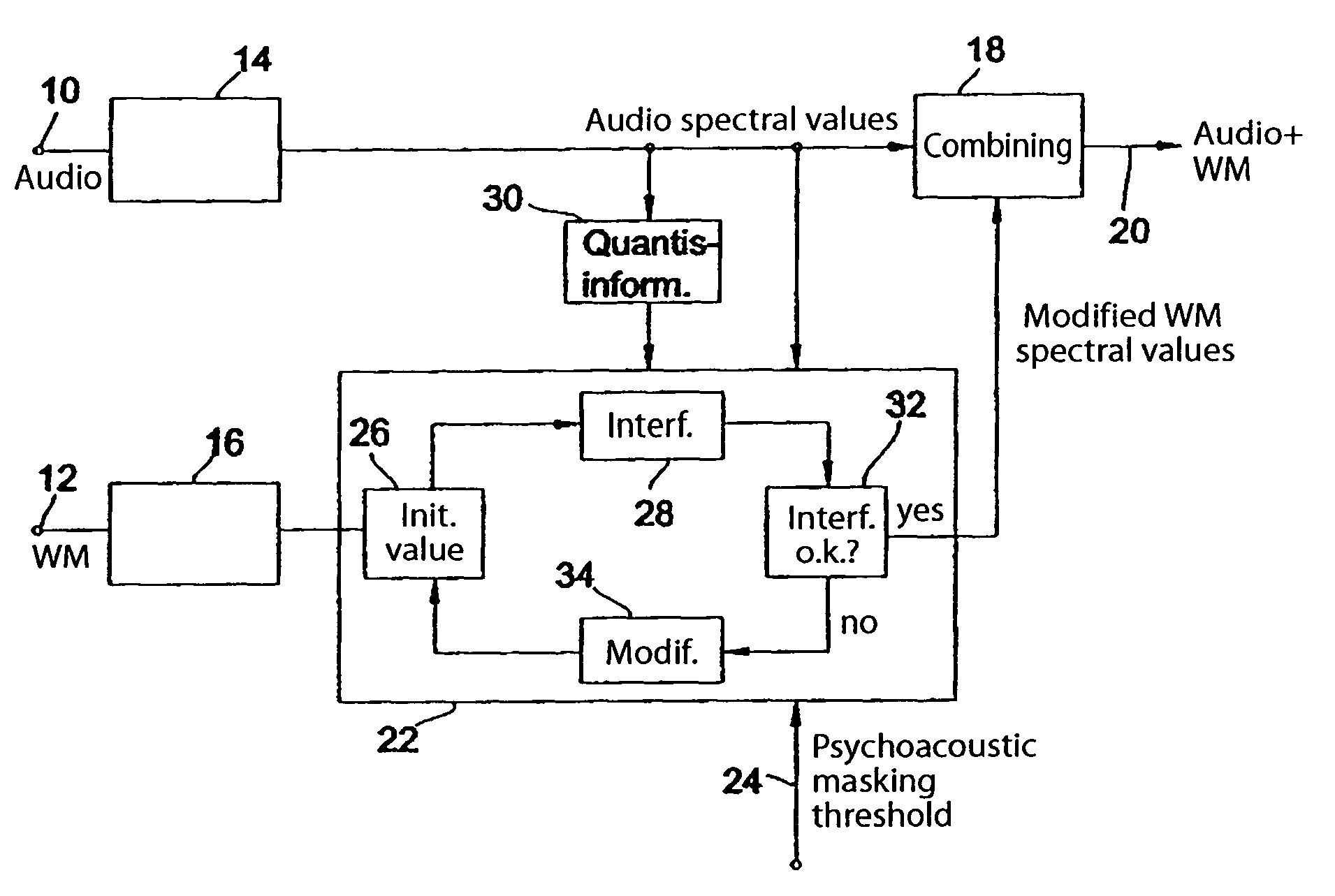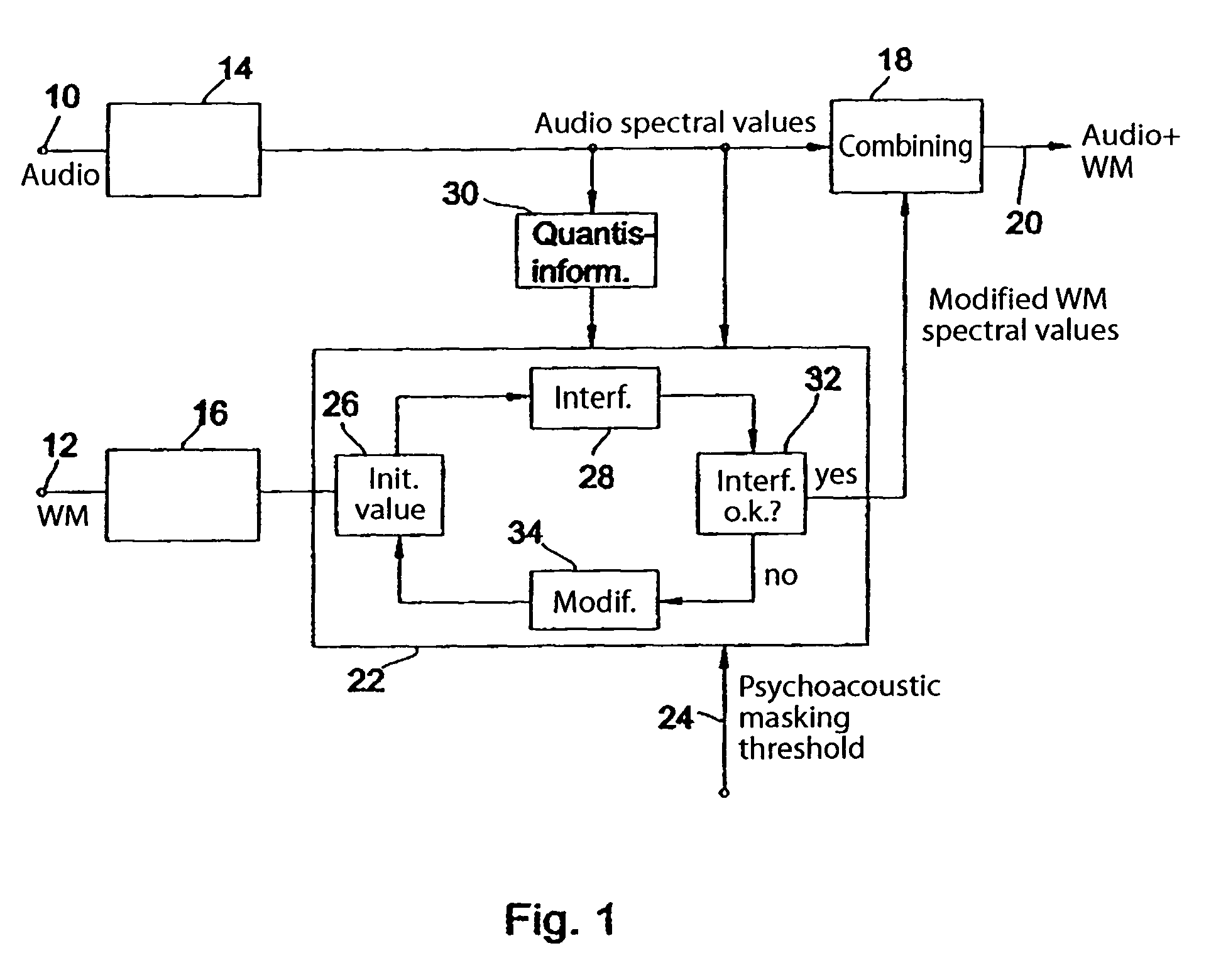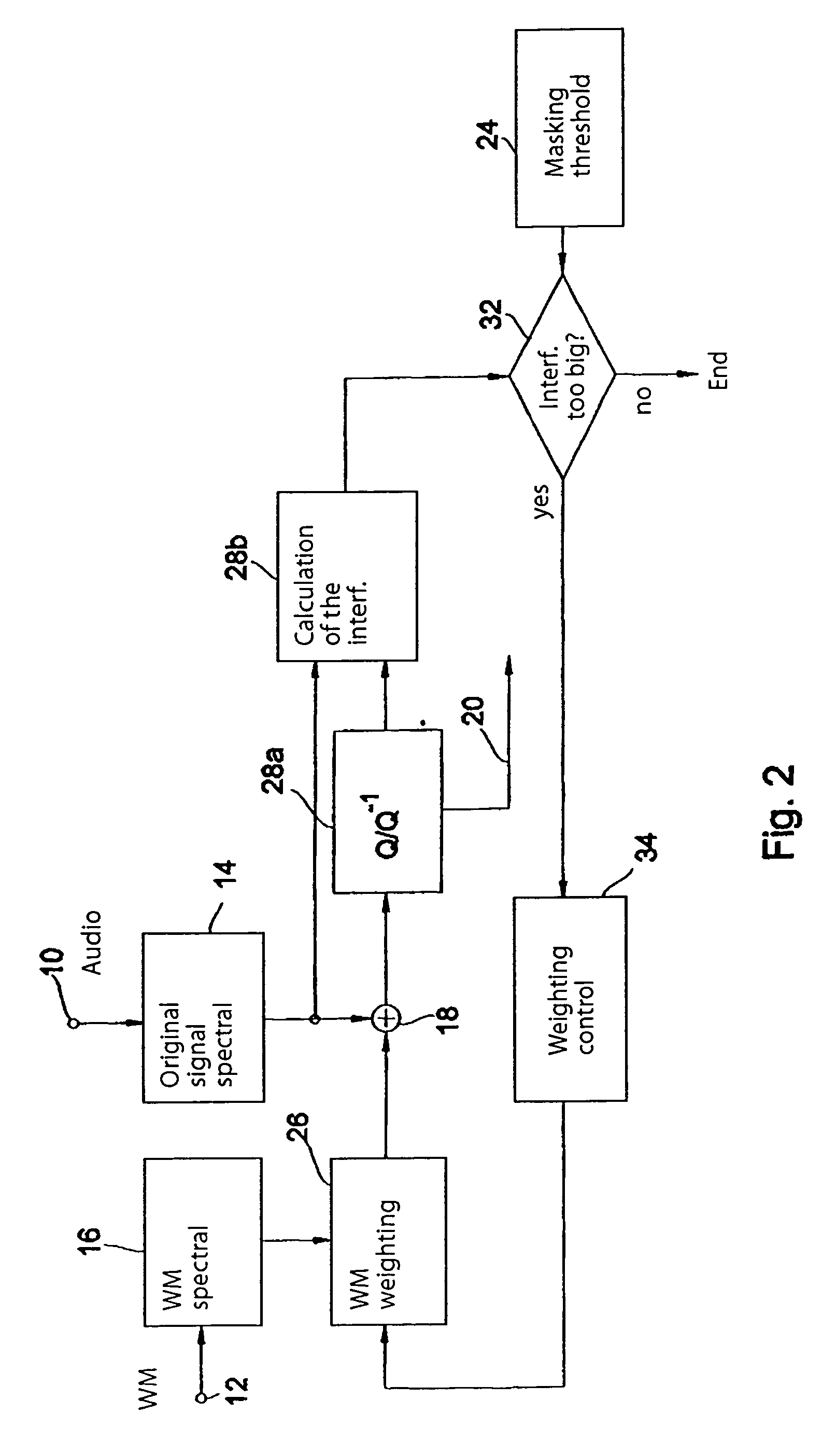Device and method for embedding a watermark in an audio signal
- Summary
- Abstract
- Description
- Claims
- Application Information
AI Technical Summary
Benefits of technology
Problems solved by technology
Method used
Image
Examples
Embodiment Construction
[0035]The device according to the present invention shown in FIG. 1 has an audio input 10 and a watermark input 12. Both the audio signal at the audio input 10 and the watermark signal at the watermark input 12 are transformed into a spectral representation by units 14 and 16 respectively. The spectral representation of the audio signal comprises audio spectral values, whereas the spectral representation of the watermark signal comprises watermark spectral values. The audio spectral values are combined with modified watermark spectral values in a unit 18 for combining to provide the combined audio signal with embedded watermark at an output 20. According to the present invention a unit 22 for processing the spectral representation of the watermark signal in accordance with a psychoacoustic masking threshold supplied via an input 24 is provided for this purpose. The spectral representation of the watermark signal is processed according to the psychoacoustic masking threshold received...
PUM
 Login to View More
Login to View More Abstract
Description
Claims
Application Information
 Login to View More
Login to View More - R&D
- Intellectual Property
- Life Sciences
- Materials
- Tech Scout
- Unparalleled Data Quality
- Higher Quality Content
- 60% Fewer Hallucinations
Browse by: Latest US Patents, China's latest patents, Technical Efficacy Thesaurus, Application Domain, Technology Topic, Popular Technical Reports.
© 2025 PatSnap. All rights reserved.Legal|Privacy policy|Modern Slavery Act Transparency Statement|Sitemap|About US| Contact US: help@patsnap.com



